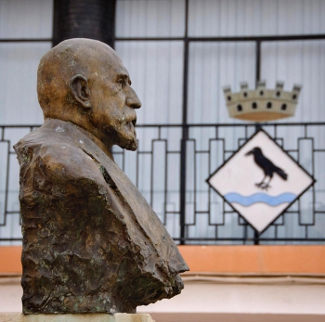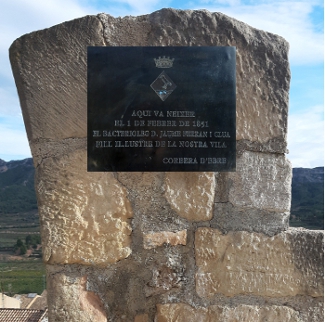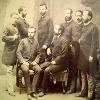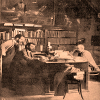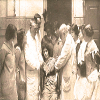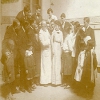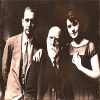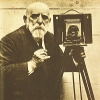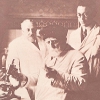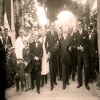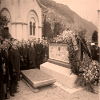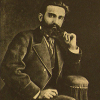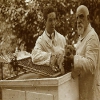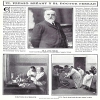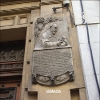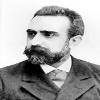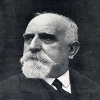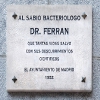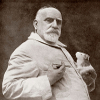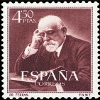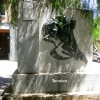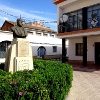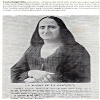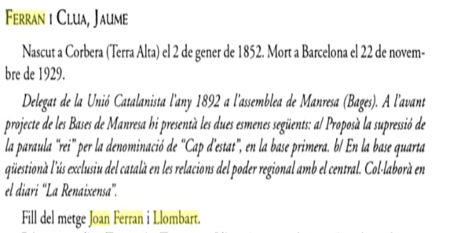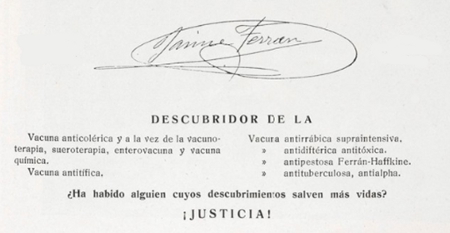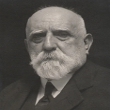
Dr. Jaume Ferran Clúa was born in Corbera d'Ebre, Tarragona, on February 1, 1851, Son of the village doctor. His grandfather, Joan Ferran, was the son of Riudoms and his paternal grandmother was Magdalena Llombart de Mora de Ebro. His father, Joan Ferran Llombart, studied medicine at the University of Cervera and at the end of the career he was a holder at Corbera, where he married with Lliberata Clúa. When Jaume was 3 years old his mother died. He studied in San Luis Gonzaga of Tortosa and Bachelor in Tarragona, and graduated in Medicine in the University of Barcelona in 1873. He established himself as a doctor in Tortosa and dedicated his first activities to the study of trachoma..
In 1878 he conceived the first idea about the handset and managed to connect, by telephone, with devices built by him, his office with the Ebro observatory in Roquetes near Tortosa.
He published in collaboration with Pauli, an important chemist of the time, a study: The instantaneousness in photography, in which he reveals the method of emulsion of silver bromide, ten times faster than the wet collodion that was then used, invention which has then enriched the US Kodak house from America.
He is interested in microbiology with Pasteur's research and in 1884 he gives the Madrid Academy of Medicine a report on bacterial parasitism, which produces sensation.
He is sent by the Barcelona City Council to Marseille with a commission to study cholera. On the way back, he gives an account of his work with his memory of the choleric epidemic in Marseille. On his own he moves to Toulon, where there is also the epidemic, returns to Tortosa and devotes himself fully to cholera research, getting, after multiple experiences in animals, and, finally, in man, discover the vaccine that immunized against the bacillus.
On March 31, 1885 he communicates his discoveries to the Academy of Sciences of Paris.
He himself tests his vaccine by ingesting a culture dose and having it ingested to his family, leaving all immune from the experiment.
For these reasons, the governor of Valencia takes him to his region where cholera rages. There he carries out more than 30,000 vaccines.
However, a strong campaign of Spanish professionals is unleashed against him. He maintains a strong confrontation with Santiago Ramón y Cajal, although he finds supporters among the foreign scientific community.
There is an important debate at the Ateneo de Madrid in which it is successfully defended by Dr. Gimeno. Castelar also defends it in Congress.
The minister Romero Robledo dictates a Royal Order by which he will not be able to apply the Ferran vaccine more than himself and in the presence of a government delegate, which hurts the sensitivity of Ferran, who decides to suspend vaccinations radically, which results in the Death of more than 150,000 people due to cholera.
Several foreign investigators try to dispute the priority in the discovery and must hold harsh controversies, from which he is victorious.
In 1886 he discovered the antitific vaccine that was applied to some workers in the sewers of Barcelona.
The following year the City Council of Barcelona founded the Rabies Institute, the second one created after Pasteur's in Paris, and Ferran puts himself in his head. Discover the method called supraintensive, to differentiate the intensive Pasteur and simplifies and improves the treatment.
In 1894, treatment was generalized throughout Spain and many thousands were immunized against rabies without a single failure.
Little by little, several wise men get to recognize the priority of Ferran's discoveries in their applications, such as Klemperer in the anti-cholera vaccine, then perfected by Behring and Kitasato; Pfeifer and Kolle, in the antitifica; Fränkel the anti-diphtheria.
In 1897 Ferran prepares the anti-alpha vaccine against the tuberculosis bacillus, which had so many excellent results.
A year later, anaerobe transforms Nicolaier's bacillus in the fight against tetanus, and also obtains significant successes in the investigation against the erysipelas of pig and anthrax and in the anti-prostate vaccine.
He maintained a close friendship with King D. Alfonso XIII, very interested in his experiments and scientific conclusions.
He received some honors, but suffered terrible persecutions from his pseudoscientific scorneds. If in Spain he was vilified, the international scientific community did understand the importance of his advances to the point of being proposed for the Nobel Prize in Medicine up to six times between 1911 and 1921.
Married in first nuptials with Dolores Domingo, his son Jaume Ferran Domingo makes the pharmaceutical career and continues to lead the Dr. Ferran Laboratories, created much earlier by Dr. Ferran in the Sagrera of Barcelona to continue his research work. The son of his daughter M Dolores Ferran Domingo, Joan Vila Ferran (Barcelona, 1908-1991) is a doctor and pharmacist while his son is the ophthalmologist Rafael Vila Piza. He is a follower of the medical branch, another grandson of his second marriage to María Santacana, the neurosurgeon Enric Ferran Rico.
On November 22, 1929, he died in Barcelona without his enormous contributions to medical science having deserved the slightest recognition of the Spanish authorities.
“Data provided by Mr. Jaume Ferran Rico, grandson of Dr. Jaume Ferran Clúa”
These lines try to keep alive the flame of recognition of the work done by Dr. Ferran.
Dr. Ferran received insufficient honors, despite his impressive contribution to medicine.
